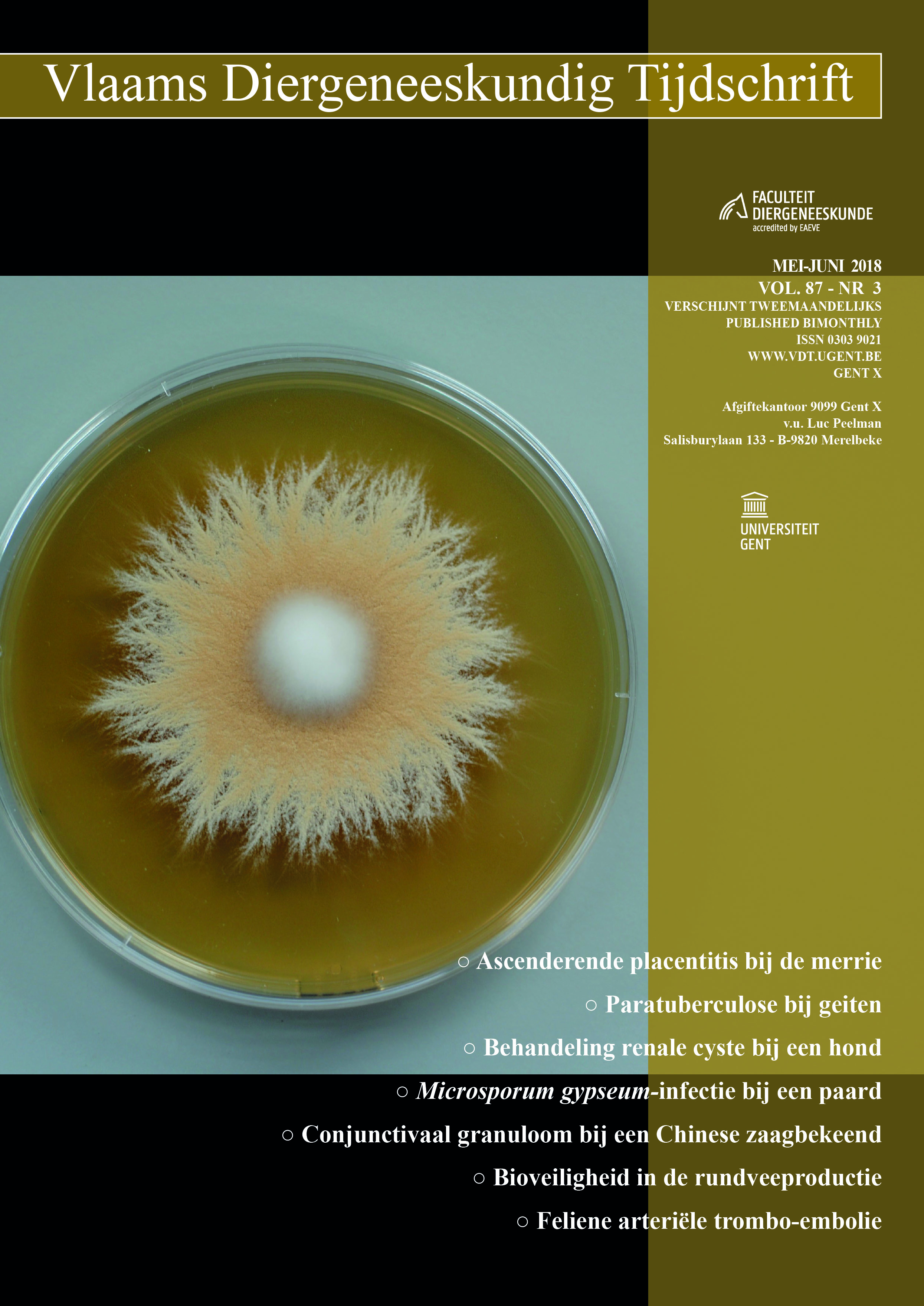Feline arterial thromboembolism: prognostic factors and treatment
DOI:
https://doi.org/10.21825/vdt.v87i3.16080Abstract
Feline arterial thromboembolism (ATE) is a complete or partial obstruction of a peripheral artery caused by a thrombus that was formed at a distant site. The most common underlying cause in cats is cardiomyopathy. Given the clinical presentation, often without preceding signs, an ATE event is considered one of the most distressing emergency conditions in feline practice. Often, these cats are euthanized at the time of diagnosis. However, recent scientific research has shown that a subpopulation of these patients may have long-term survival. In case of adequate treatment and follow-up, some cats survive over a year with a satisfying quality of life. Key points of ATE are the identification of specific prognostic factors in the individual patient in order to guide owner communication, the decision to treat or not to treat, individually adjusted patient management and regular monitoring, which are discussed in this article.Downloads
Published
2018-06-27
Issue
Section
Continuing Education


